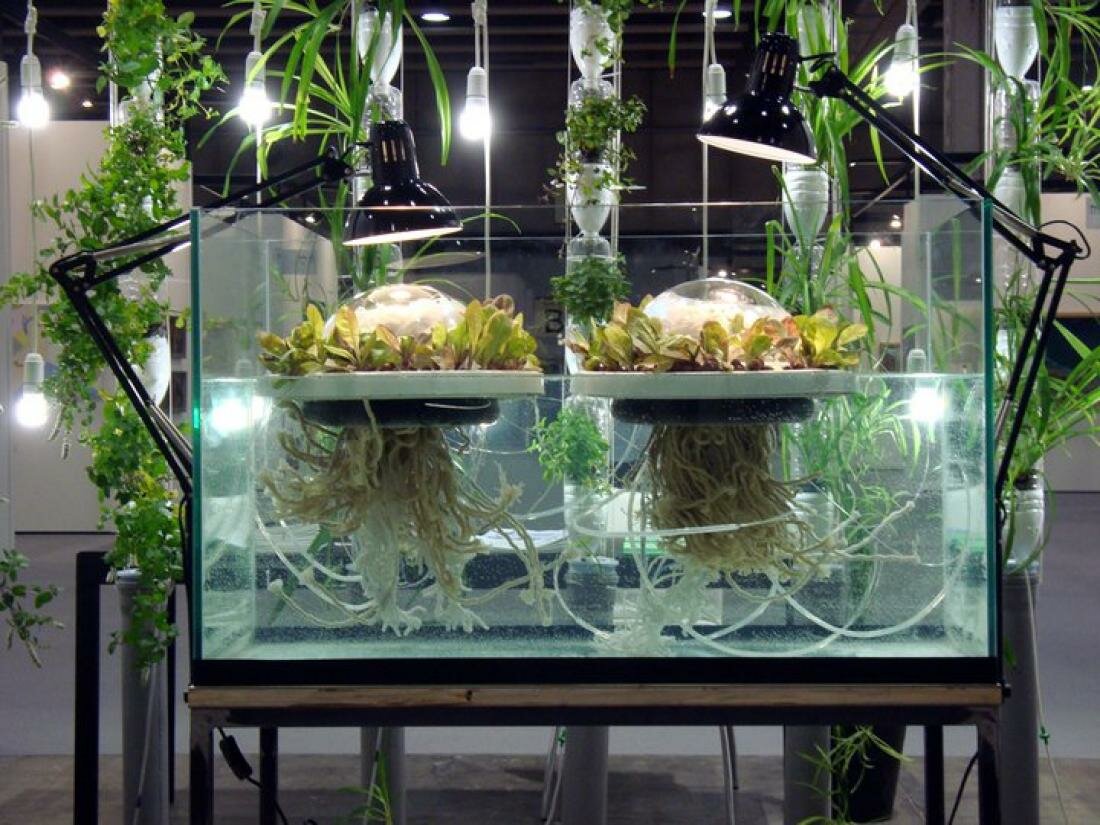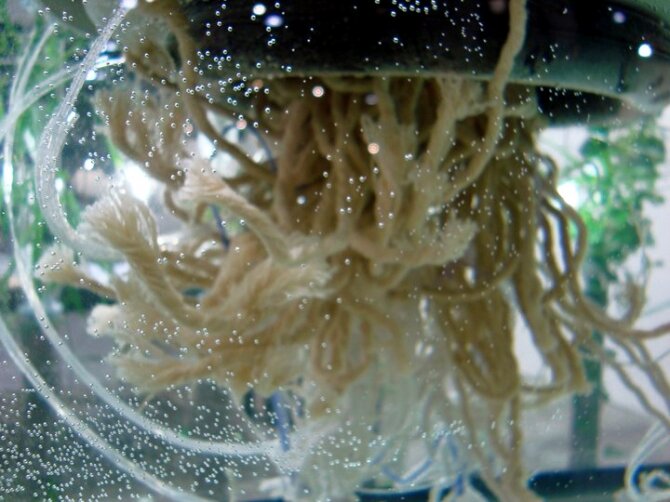Jellyfish Farm
 |
|
Year 2010 Location ArtVerona, Verona / Sustain/Ability, Treviso Typology Interactive art installation The installation ”Jellyfish Farm” exploits the sea water desalinization process to cultivate floating vegetable gardens. The purpose is to point out the water, as a relevant element in social and political global dynamics. The installation is composed by an aquarium filled with salty water in which two islands are floating. They are in the shape of jellyfish and are made from recycled materials. The tentacles,made of natural cotton fibers, absorb and bring water up to the jellyfish brain by capillary action. When the cotton mass is dampened, the heat of the lamps make the water evaporate. The steam is forced to flow upward and condenses when in contact with the plexiglass surface of the dome. The fresh water produced by desalinization irrigates the two hydroponic small floating gardens. |
| The installation is as a sort of “neo-nature”, where recycled objects become an autonomous living organism. Under the natural iron table there’s a small wood box containing salt. People are invited to interact with the installation adding salt to the water. The box bores the inscription: “5.5 billion of people will face water shortage by 2025. Unequal distribution of water will lead to conflict. 98% of the world's water resources is in the oceans.” “Jellyfish Farm” was presented during Art Verona 2010 and it was set in Fondazione Benetton – Palazzo Bomben in Treviso on the occasion of the festival Sustain/Ability. |
 |
| L’installazione-prototipo “Jellyfish Farm” sfrutta il processo di desalinizzazione dell’acqua marina per la coltivazione di orti galleggianti. L’obiettivo è riportare l’attenzione sul tema dell’acqua, quale elemento di importanza sempre più rilevante nelle dinamiche politiche e sociali globali. L’acqua all’interno della vasca è salata. Due isole galleggianti a forma di medusa e costruite con materiali di riciclo, ospitano due orti idroponici. I tentacoli, in fibra di cotone naturale, assorbono acqua per capillarità fino a portarla al nucleo centrale della medusa. Una volta inumidita la massa in cotone all’interno della cupola in plexiglass, il calore proveniente dalle lampade evapora l’acqua. Il vapore, condensa a contatto con la superficie in plexiglass. L’acqua prodotta alimenta i piccoli orti galleggianti. |
| L’installazione si propone come una sorta di neo-natura, dove oggetti provenienti dal riciclo quotidiano diventano un organismo vivente autonomo. Alla base del tavolo in ferro naturale si trova una piccola cassetta in legno contenente sale. Le persone vengono invitate ad interagire salando ulteriormente l’acqua. La cassetta porta la dicitura impressa: “ 5.5 billion of people will face water shortage by 2025. Unequal distribution of water will lead to conflict. 98% of the world’s water resources is in the oceans.”“Jellyfish Farm”è stata presentata nel corso di Art Verona 2010 ed esposta successivamente alla Fondazione Benetton-Palazzo Bomben a Treviso durante il Festival Sustain/Ability . |
| Credits: Design team and production: Cristiana Favretto, Antonio Girardi Photography: Silvia Boschiero, Fabrizio Urettini |